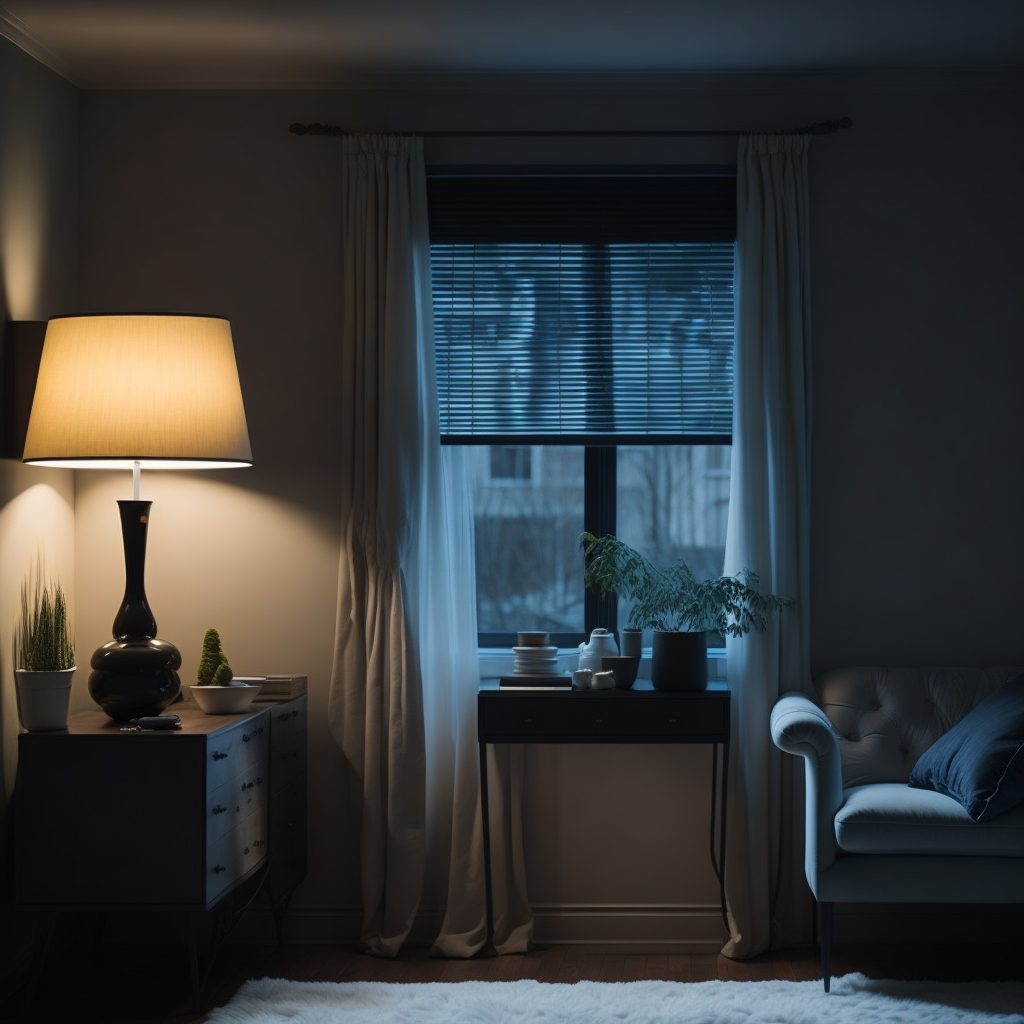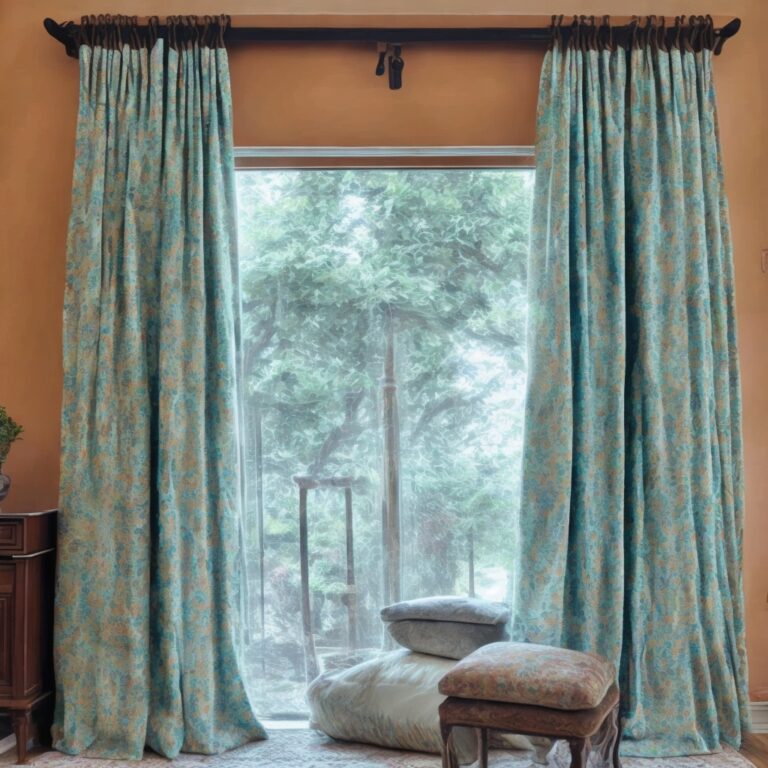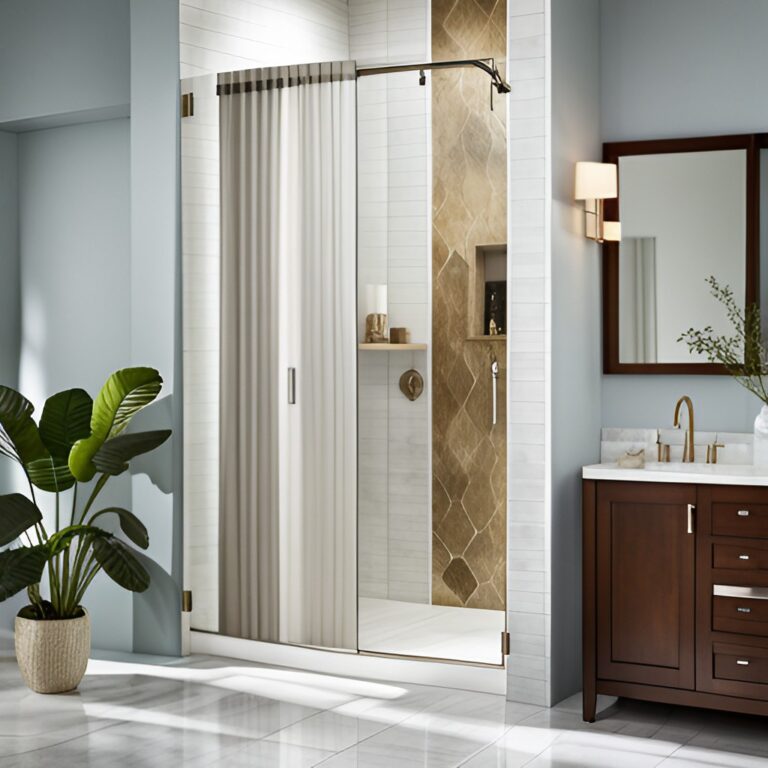How to Brighten a Dark Room: Easy Tips and Tricks
Are you tired of living in a dim and dreary space? Do you yearn about How to Brighten a Dark Room? Well, you’re in luck! In this blog, we will share expert tips and tricks on how to illuminate a dark room and create an inviting atmosphere. We will commence by exploring the fundamental principles of brightening a room, including the vital role that lighter color plays in illuminating spaces.
Subsequently, we will delve into the art of skillfully utilizing paint, harnessing the transformative power of mirrors, and understanding the impact of furniture and patterns on room brightness. Furthermore, we will examine various flooring options, explore methods of augmenting natural light, and consider alternatives to heavy curtains. By the conclusion of this blog, you will possess all the knowledge necessary to metamorphose your dark room into a vibrant and welcoming haven.
What is the best way to brighten a dark room?
The best way to brighten a dark room is by maximizing natural light. Keep curtains and blinds open during the day, use light-colored paint on walls, hang mirrors to reflect light, and strategically place lamps and light fixtures throughout the room.
Understanding the Fundamentals of Brightening a Room

Absolutely, several strategic techniques can drastically brighten a dim room. One efficient approach involves the use of light-hued paint or wallpaper, which can help reflect natural light and invigorate the room. Placing mirrors strategically is another great way to bounce light around, creating a sense of openness and luminosity. Removing obstacles that block natural light, like heavy curtains or oversized furniture, is also crucial.
Further, the addition of artificial light sources such as lamps and ceiling lights can amplify the room’s brightness even more. To maximize light reflection, consider integrating reflective elements like glass or metallic accents into your decor. Finally, choosing light-colored furniture and accessories not only augments the overall brightness but also shapes a warm, inviting atmosphere. By implementing these techniques, you can turn a dark, drab space into a vibrant, welcoming haven.
The Role of Color in Illuminating Spaces
In the realm of illuminating a dimly lit chamber, the first thing to consider is the pivotal role of color. Luminous hues such as alabaster, pastels, and neutrals wield the power to reflect an abundance of light, instantaneously imparting an aura of radiance to any space. Adopting a monochromatic color scheme, replete with a myriad of shades within a single hue, holds the potential to engender luminosity and foster a harmonious ambiance. To imbue a room with visual allure and infuse it with exuberance, embellishing it with bursts of vivid colors proves to be an excellent method of accomplishment.
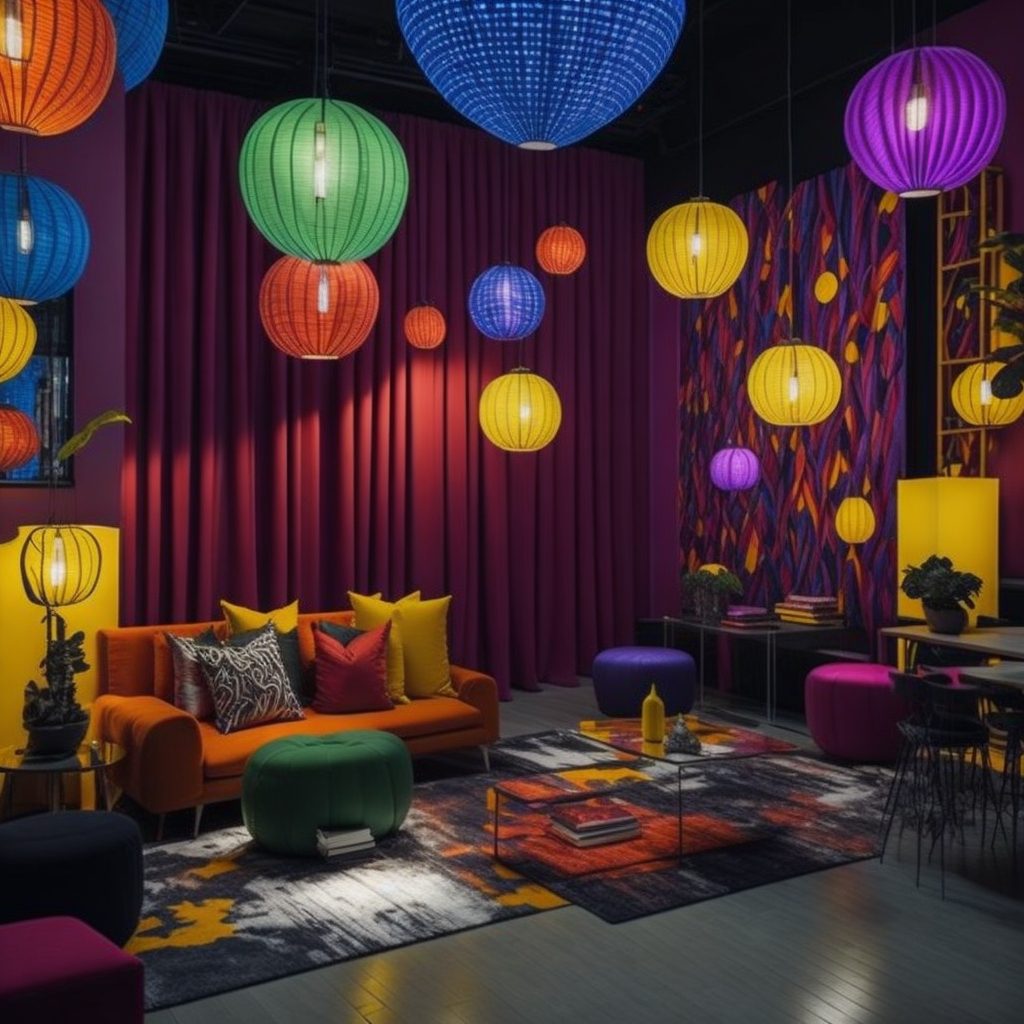
Conversely, eschewing somber or weighty tones on the walls and instead opting for paint or wallpaper bedecked in light hues is of paramount importance. Furthermore, giving due consideration to the natural illumination in the room and selecting colors that harmonize seamlessly with the available lighting can engender a palpable difference in how effulgent one’s living space feels.
Effective Use of Paint to Enhance Lighting
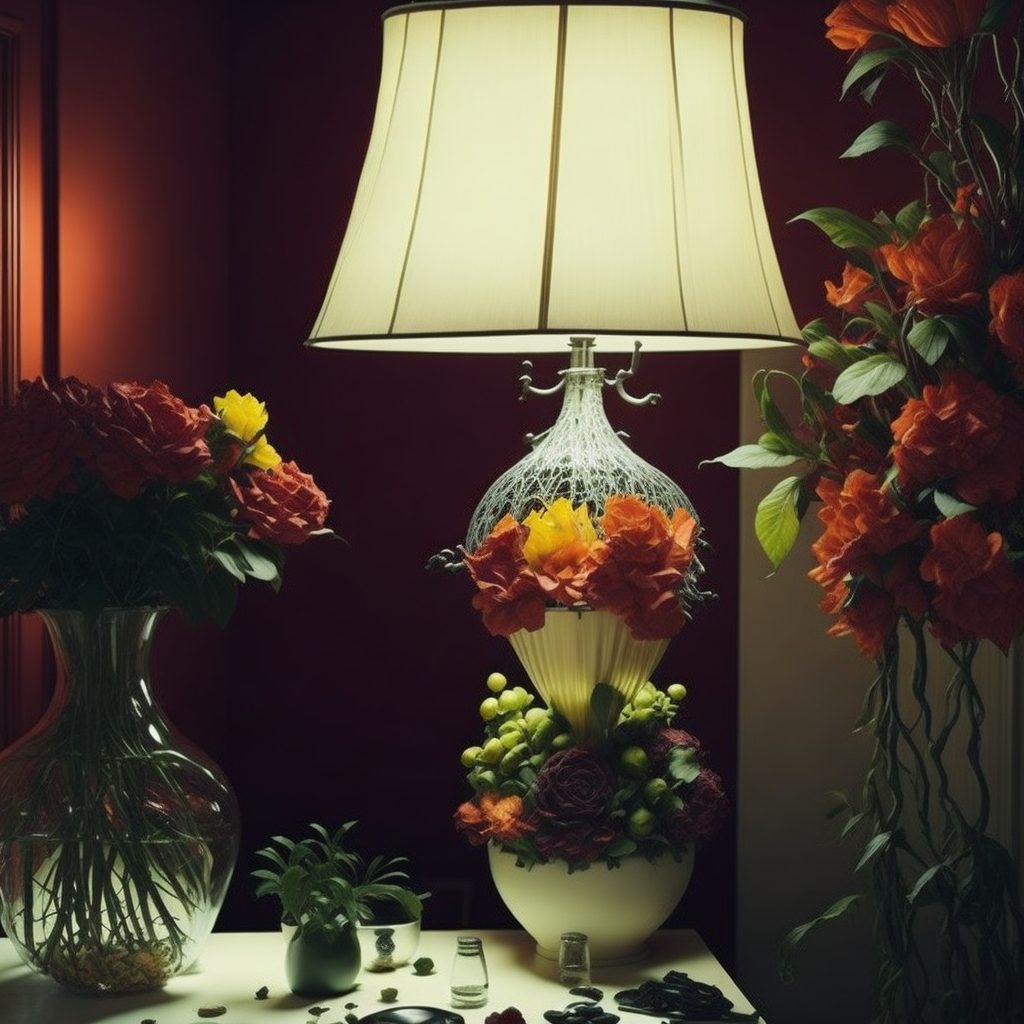
Enhancing the lighting in a dark room can be achieved by choosing light and bright colors for your walls and ceiling. Opt for white walls to create a surefire way of amplifying the available natural light. Consider using glossy or satin finish paints to create a reflective surface that further maximizes the brightness. To prevent absorbing excessive light, opt for lighter shades of furniture and décor. You can strategically place mirrors in the room to bounce and amplify existing light sources, resulting in a brighter space. Additionally, using a well-placed light fixture can both brighten specific areas and create a visually captivating ambiance. To ensure maximum natural light, keep your windows unobstructed.
Why White and Light Shades Work Best
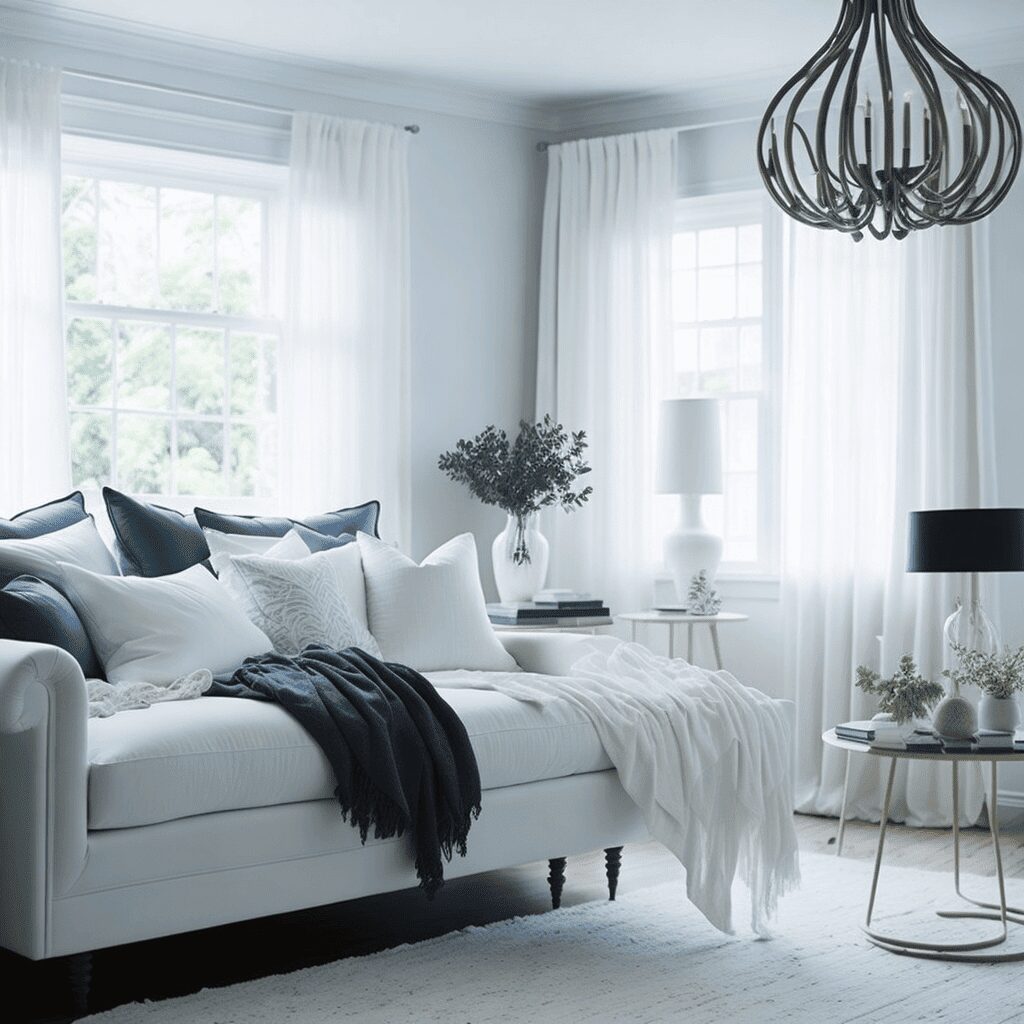
When aiming to brighten a dark room, the best way is to choose white and light shades. These colors have the ability to reflect both natural and artificial light, instantly creating a brighter atmosphere. Light-colored walls create the illusion of more space while ensuring even light distribution throughout the room. Incorporating a white or lighter color ceiling can further enhance brightness by reflecting light downwards. Additionally, using light shades on furniture and accessories enhances the overall luminosity of the room. Lastly, remember to select white or light-colored window treatments to maximize the entry of natural light into the space.
The Power of Mirrors in Amplifying Light
Mirrors stand as a potent instrument to illuminate a dimly lit chamber. Through artful placement, these reflective marvels possess the ability to capture and bounce natural light, conjuring the illusion of an illuminated expanse. When employing sizable mirrors, not only does the room gain a perception of increased size, but the available light reaches its maximum potential in contributing to the room’s luminosity. To optimize brightness, strategic placement of mirrors opposite windows or light sources, such as a skylight, allows light to dance playfully around the room, casting away shadows and uplifting the ambiance.
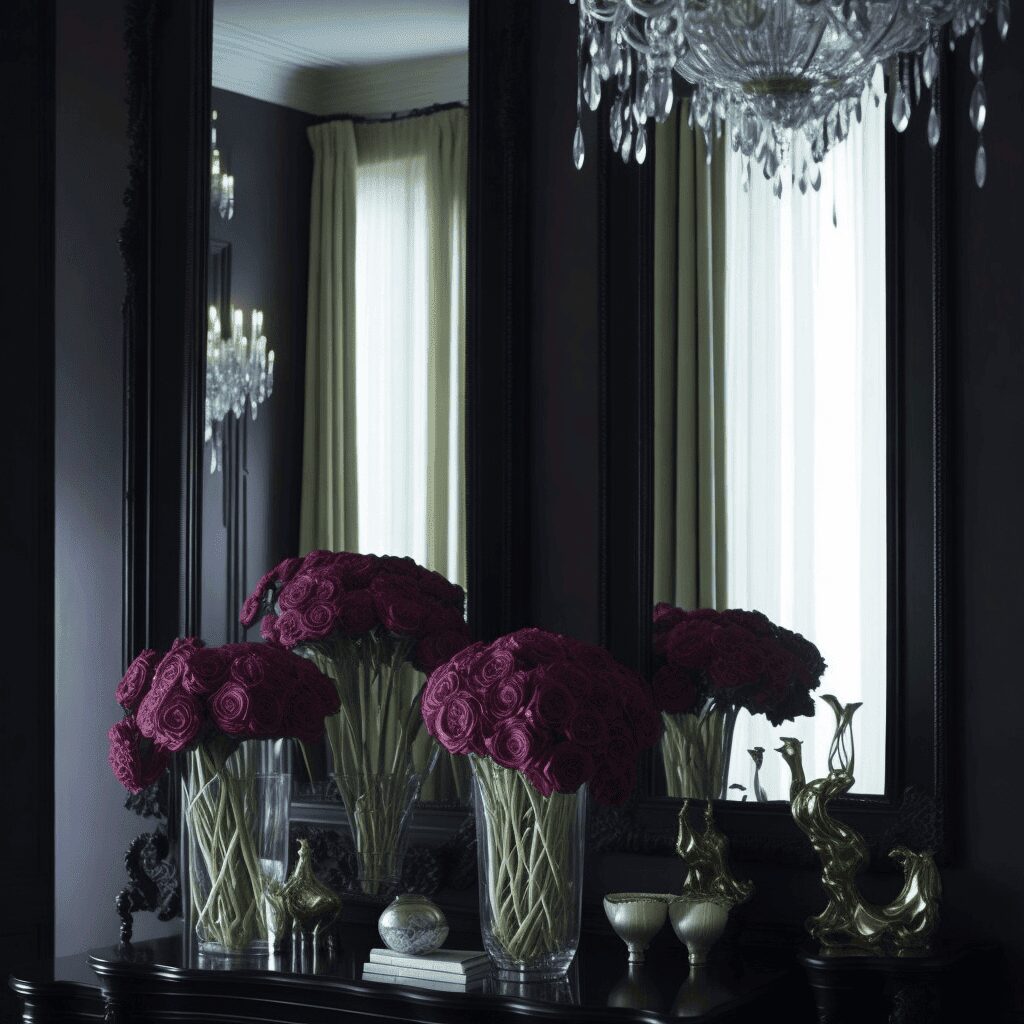
Introducing mirrored furniture or accessories amplifies this captivating light-reflecting phenomenon, further elevating the room’s brilliance. A touch of experimentation with diverse shapes and sizes of mirrors lends insight into the ideal integration that complements the room’s layout and décor.
Strategic Placement of Mirrors for Maximum Reflection
Strategically positioning mirrors in a small room can have a remarkable effect, instantly brightening up the space. One effective technique is to place mirrors across from windows, allowing them to reflect and disperse natural light throughout the room. Another approach is to hang large mirrors on the walls, creating the illusion of more space and amplifying the room’s brightness. Additionally, placing mirrors behind light sources, such as lamps or fixtures, can help bounce light around and enhance the overall brightness. Consider arranging mirrors of different shapes and sizes together to create a focal point, further enhancing the room’s radiance. Experimentation with mirror placement is key in finding the optimal configuration for maximum reflection.
Impact of Furniture on Room Brightness
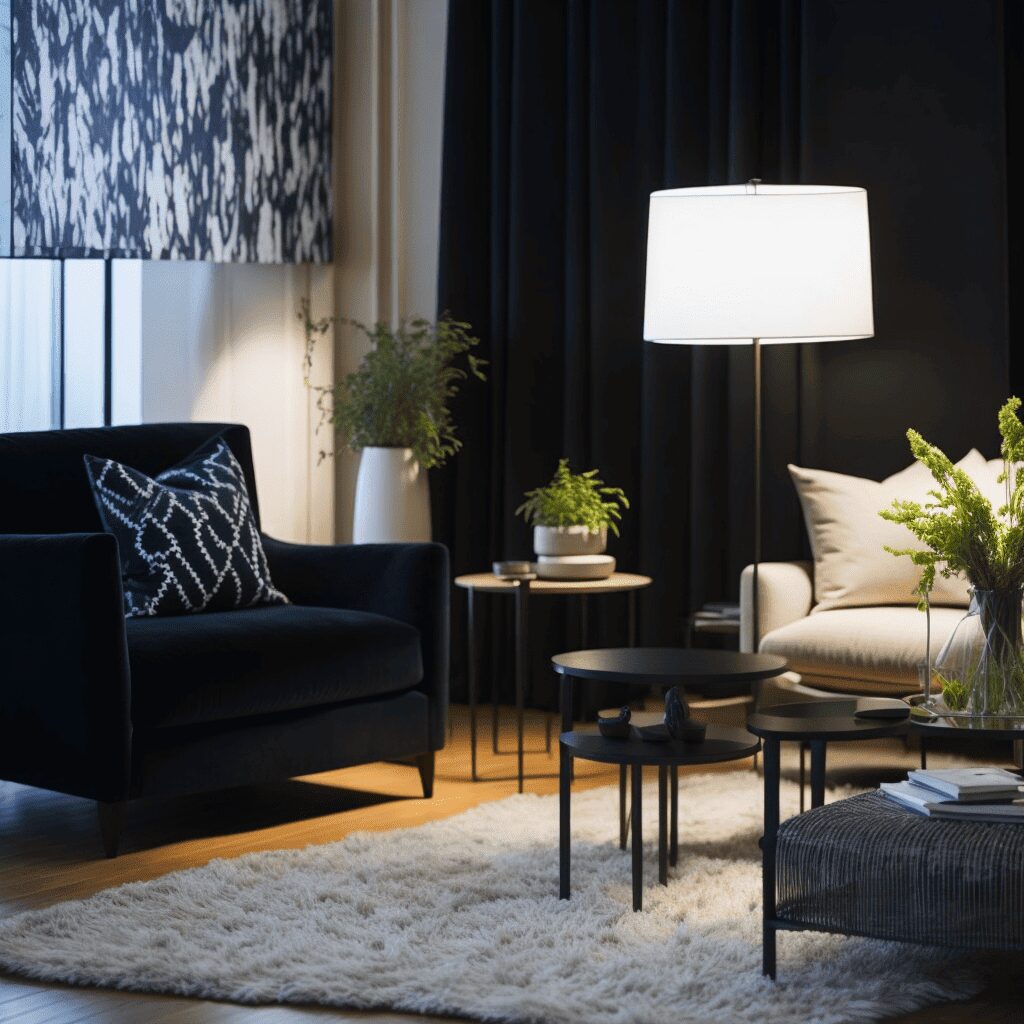
Opting for furniture donning light hues and reflective surfaces proves to be a splendid method for harnessing the daytime’s natural light in a room. Thoughtfully arranging the furniture fosters an unimpeded flow of light, permeating every nook and cranny of the space. Moreover, mirrors stand as an infallible stratagem to conjure the impression of augmented light and space, skillfully reflecting and magnifying the available natural illumination.
The prudent avoidance of cumbersome or outsized furniture serves as a vital precaution against obstructing the sun’s rays, ensuring that the room retains its spacious and radiant ambiance. Deliberating furniture choices that incorporate built-in lighting features, such as elegant table lamps, offers a wonderful means to dispel darkness from obscure corners, ensuring the room is perpetually bathed in brightness.
Choosing Furniture Materials for a Brighter Room
Choosing the right materials for your furniture can have a significant impact on brightening up a dark room and improving its visibility. To enhance the brightness and create a dark room feel, opt for light-colored furniture that reflects natural light. Avoid heavy and bulky pieces that can make the room feel darker and closed-off. Instead, go for materials like glass or acrylic to add a sense of lightness and visibility. Mirrored or glossy finishes can further enhance brightness by creating reflective surfaces.
Additionally, incorporating furniture with open designs, such as transparent or slatted pieces, allows light to flow freely through the room. For a subtle touch of brightness, consider adding a grey accent piece like a throw pillow or rug without overwhelming the space.
The Art of Using Patterns to Lighten a Room
Infusing a room with patterns and elements bedecked in light hues holds the potential to elevate its radiance and visual allure to remarkable heights. Employing light-colored or patterned wallpaper stands as one effective approach, lending not only visual fascination but also an illuminating effect to the space. Alternatively, adorning the windows with curtains or blinds boasting captivating patterns ushers in natural light while bestowing a sense of depth upon the room.
Furniture featuring patterns or upholstery in light tones takes center stage as a captivating focal point, contributing further to the room’s overall luminosity. Furthermore, the addition of patterned rugs or carpets imbues the floor with texture and brightness, further enlivening the ambiance. Hanging resplendent artwork or mirrors adorned with striking patterns or light-colored frames allows light to playfully dance and imparts an illusion of a grander, more luminous expanse. Conversely, in a dimly lit bedroom, the opposite effect reigns, rendering the room smaller and less inviting. Interior design plays a crucial role in creating a visually appealing and inviting space, and much time should be devoted to achieving the desired effect.
How Patterns Give an Illusion of Brightness
When considering incorporating patterns into your light-colored décor, it’s important to remember that they can trick the eye into perceiving a brighter space, even in rooms that are a bit dark. To make the most of this illusion of space, go for patterns on materials that have the capacity to reflect light. This way, they’ll disperse light across the room, making it feel lighter and airier in an obvious way.

Opting for designs with vertical stripes is a clever move, as they generate a sense of height and expansiveness, which can make your room feel larger than it really is. Patterns that come with metallic elements can add a twinkle to your room, augmenting the overall brightness. And don’t be shy about combining patterns of varying sizes – it can add a lively dynamism to your room, and keep things interesting.
Flooring Choices to Brighten Your Room
If you’re looking to illuminate a dark room, your flooring choice can play a substantial role. It’s wise to select lighter materials such as pale woods, vinyl, or laminates, including light-hued hardwood like light wood. These options don’t just mirror natural light, they also contribute to an overall brighter ambiance. You may want to contemplate finishes that are glossy or reflective, like high-gloss finishes.
These types of surfaces can scatter light around the room, creating an inviting, open atmosphere. Don’t overlook the potential of light-colored carpets or rugs, as they can infuse both brightness and a cozy warmth into your space. Also, installing large, light-colored floor tiles can create a mirage of a more expansive and brighter area. It’s advisable to sidestep dark-colored flooring materials or patterns, as they tend to swallow light, rendering the room gloomier.
Why Opting for Light Floors can be Beneficial
Choosing light-colored flooring for a dark room offers numerous benefits, among which is a noticeable enhancement in room brightness. For starters, light floors can reflect both natural and artificial light, immediately adding a touch of vibrancy to the area and creating a welcoming atmosphere. In addition, such floors have the magic of making a room feel roomier than it really is, imparting the illusion of a more generous space.
This light flooring choice also offers versatility that pairs well with various color palettes and design aesthetics. Moreover, these light tones contribute to a tranquil and soothing ambiance, ideal for crafting a peaceful haven. A practical advantage is that light-colored floors make dirt and dust easily visible, leading to uncomplicated cleaning and upkeep. To achieve such an effect, consider the use of white paint on your floors.
The Importance of Supplementing Daylight
Incorporating mirrors can be an excellent strategy for bouncing natural light around and conjuring the perception of a brighter environment. Opting for light-colored paint or wallpaper can instantly lift the mood of the walls, making the room appear more open and expansive. Supplementing natural light with artificial lighting fixtures, such as standing lamps or task lights, can further enhance the room’s brightness. Implementing light-colored furniture and accents in your decor adds a layer of brightness and provides an appealing contrast.
Do away with thick curtains or blinds, and instead choose sheer or light-filtering window treatments to let in more sunlight. Maintaining an orderly and clutter-free space not only optimizes light flow but also fosters an open, breezy ambiance. For an added touch, strategically position mirrors to bounce off light and create an optical illusion of a more spacious room.

Different Light Sources to Consider
Brightening a dark room demands careful consideration of various light sources, and light bulbs play a significant role in this. Natural light stands out as one of the best options; it enhances brightness and significantly uplifts the mood of the space. Artificial light ensures steady illumination, becoming particularly useful when darkness descends. Task lighting is another good option; it provides concentrated light to designated areas for activities such as reading or working.
To spotlight decorative features and inject visual intrigue into the room, consider accent lighting. To craft a sense of depth and ambiance, employ layered lighting, which blends various light sources, including ambient lighting. By infusing these diverse light sources into your room’s design, you can morph a dark room into a luminous, welcoming haven.
Is Heavy Curtains a Barrier to Bright Rooms?
Yes, heavy curtains can significantly impede the brightness in a room. Their thick and non-transparent nature tends to obstruct natural light from seeping into the room, resulting in a darker, less vibrant atmosphere. If your goal is to illuminate a dim room, it’s recommended to remove or switch out heavy curtains for sheer or light-filtering alternatives. These lighter window treatments permit more natural light to stream in and light up the room, contributing to a much brighter, more welcoming space.
To further enhance room brightness, consider incorporating color and reflective surfaces into your decor. Bright, light-reflecting colors on walls and furniture can maximize the light in the room. Additionally, surfaces like mirrors or glossy finishes can bounce light around the room, creating an illusion of a more expansive and brighter space.
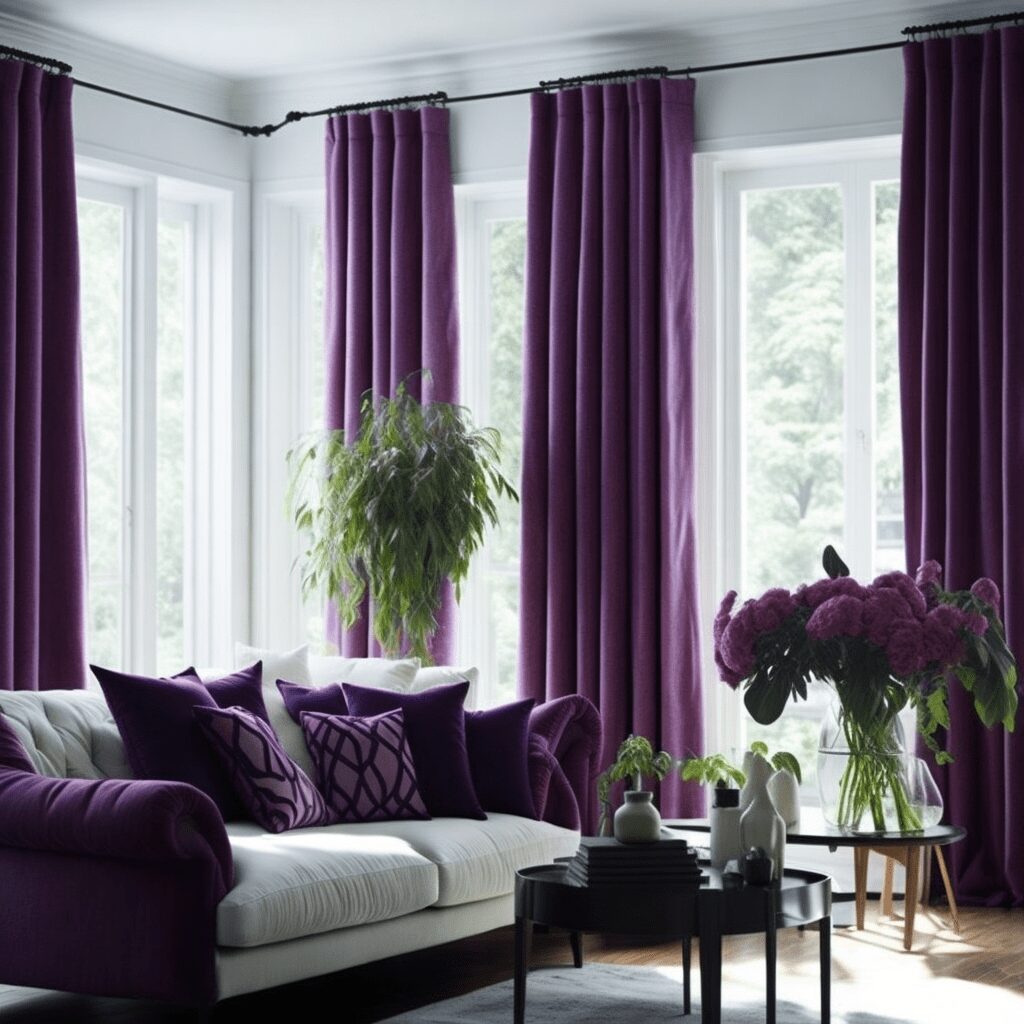
Alternatives to Heavy Curtains for More Light
Indeed, various alternatives to heavy curtains can infuse more light into a dark room. Sheer curtains make for an excellent choice, permitting the passage of natural light while maintaining a level of privacy. Adjustable blinds or shades are another versatile option, which can be fully opened or adjusted to control the amount of light entering the room. Light-colored curtains are also a good pick, as they reflect light and create an atmosphere of openness.
An alternative route could be using frosted or textured window film that allows in ample natural light while preserving your privacy. Translucent roller shades strike a nice balance between letting light in and ensuring privacy. By opting for these curtain alternatives, you can significantly brighten up and enhance the ambiance of your living room or any other area of your home.
How Can Artwork Contribute to a Brighter Room?
You’re absolutely right. Artwork holds significant potential for transforming a darker room into a vibrant, brighter space. Integrating art pieces with bold and vivid hues that synergize with your room’s color palette can infuse delightful pops of color and pique visual interest. Selecting artwork with reflective features like metallic touches or shiny finishes can help scatter light throughout the room. Also, carefully positioning artwork near windows or other sources of light can effectively accentuate the natural light, making the room feel even more luminous and inviting. By thoughtfully choosing and placing artwork, you can dramatically brighten up your room.
Frequently Asked Questions
Can I brighten a room without using artificial lighting?
Yes, you can brighten a room without relying solely on artificial lighting. Utilize natural light by using sheer curtains, positioning furniture away from windows, and painting walls with light colors to reflect light better. Additionally, incorporate mirrors strategically to bounce and amplify natural light.
What colors should I use to make a room feel brighter?
Opt for light and neutral colors such as white, pale beige, light gray, or pastel tones. These colors reflect more light and create a sense of brightness and openness in the room.
How can I make a small window appear larger and let more light in?
Install curtain rods slightly above the window frame and extend the curtains beyond the window’s width to create an illusion of a larger window. Using light-colored, sheer, or translucent curtains can also allow more light to enter the room.
What are the best light bulbs for energy efficiency?
LED (Light Emitting Diode) bulbs are the best choice for energy efficiency. They consume less energy, have a longer lifespan, and produce less heat compared to traditional incandescent bulbs.
Will using mirrors really make a difference in brightening a dark room?
Yes, mirrors can significantly brighten a dark room. They reflect light, making the space feel more open and spacious. Placing mirrors opposite windows or near light sources can amplify the effect of natural and artificial lighting.
How can I balance natural and artificial lighting effectively?
To achieve a balanced lighting scheme, combine different types of lighting sources. Use ambient lighting for overall illumination, task lighting for specific activities, and accent lighting to highlight focal points. Adjust the intensity of each light source with dimmers to control brightness throughout the day.
Are there plants that can survive in rooms with limited sunlight?
Yes, there are several low-light tolerant plants that can thrive in rooms with limited sunlight. Some examples include snake plants, pothos, peace lilies, and ZZ plants.
Can I use candles as a source of ambient lighting?
Yes, candles can be used to create a cozy and ambient atmosphere in a room. However, they might not provide sufficient brightness for functional lighting purposes in dark spaces.
Is there a recommended height for installing ceiling lights?
The recommended height for installing ceiling lights may vary based on the room’s size and purpose. In general, for standard 8-foot ceilings, a height of about 7 feet is suitable for most ceiling fixtures.
How can I avoid creating glare with my lighting choices?
To avoid glare, use lampshades, diffusers, or frosted bulbs to soften the light. Position light fixtures away from reflective surfaces and ensure that light sources are not directly in the line of sight. Use adjustable lighting to redirect the light as needed.
Conclusion
In conclusion, brightening a dark room is all about understanding the fundamentals of lighting and using strategic techniques to enhance natural and artificial light. Choosing light colors for walls and furniture, utilizing mirrors for reflection, and incorporating patterns that create an illusion of brightness are all effective ways to transform a dim space. Additionally, opting for light flooring and considering alternative window treatments can make a significant difference in the overall brightness of a room.
Don’t underestimate the power of artwork either – selecting pieces that feature light and vibrant colors can contribute to a brighter ambiance. By implementing these tips and tricks, you can create a welcoming and well-lit space that uplifts your mood and enhances your living experience.

